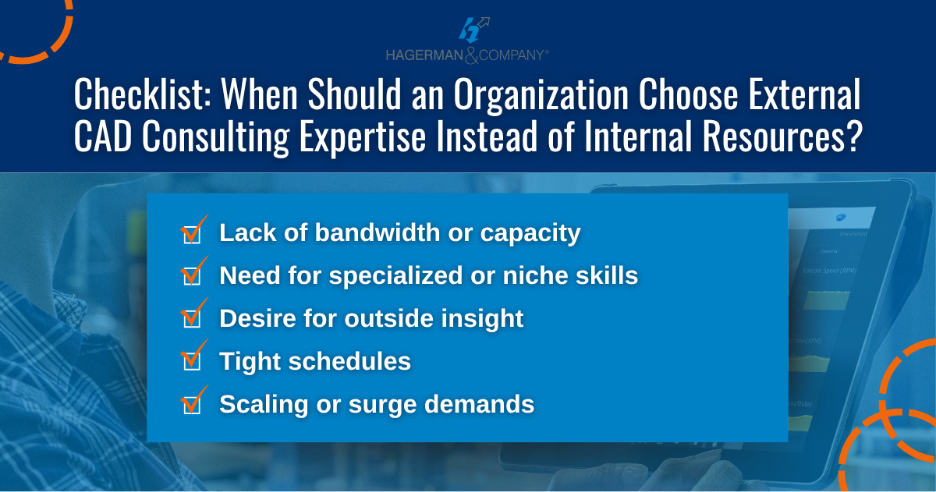
Product data is the digital blueprint of creation, generated by manufacturers at every stage of engineering and development. This intelligence originates from diverse sources like CAD models, engineering change orders, Bills of Materials (BOMs), test reports, and supplier inputs. It flows through many hands and systems to support decisions throughout design, manufacturing, quality, and procurement.
But when this data is stored in traditional systems or shared through fragmented processes, it becomes siloed, a problem that 95% of manufacturing organizations experience. Over time, these silos cause miscommunication, duplication of effort, delays, and costly errors.
To break this cycle, manufacturers are turning to integrated systems, such as Product Data Management (PDM) and Product Lifecycle Management (PLM). Let’s examine the importance of this convergence and how it supports smarter, faster, and more profitable product development.
How Does PDM Work?
Where does your engineering data reside? Is it stored on a shared drive, in local folders, or perhaps tracked in a spreadsheet? Files get duplicated or misplaced, teams work on outdated versions, and collaboration suffers. Without clear traceability, project timelines and product quality invariably decline.
PDM systems manage and control engineering data, such as CAD files, part numbers, and revisions. They organize files in a centralized repository, enforce version control, and manage access permissions so teams work with the most current data.
Beyond file storage and access, PDM systems also track critical metadata, such as part attributes and relationships, to support assembly management and clarify dependencies. This enables structured workflows for approvals, change orders, and file releases. Additionally, PDM integrates with other enterprise systems, enabling seamless data sharing across departments while maintaining a controlled and audit-ready environment.
How Does PLM Work?
Unlike PDM, which focuses on managing and controlling engineering design files, PLM systems oversee the entire lifecycle of a product, from concept through design, manufacturing, and completion.
PLM works by aggregating data from systems like PDM for CAD and part data, ERP for cost and inventory, and supplier platforms for sourcing and compliance. It creates a central and structured environment where product information is linked, versioned, and controlled in context.
“The primary reason we see customers interested in PLM is their need to get to market faster. The outcomes they’re aiming for include better collaboration and greater product development agility. That could mean increasing output from ten to twelve products a year. It might sound small, but even a slight time savings per product can add up to a significant gain in overall output.”
- Fred Smith, Senior Solution Architect, Autodesk
Beyond data management, PLM extends its reach to change control, configuration management, and compliance tracking, tying design data directly to manufacturing, quality, and supply chain functions. This integrated approach accelerates decision-making and minimizes errors, enabling faster product development cycles and accelerated time-to-market.
The Advantages of PDM/PLM Systems in Accelerating Manufacturing Product Development
Product Data Integration
PDM stores and controls design files such as CAD models, drawings, and part definitions. PLM systems link this design data to other processes like change management, sourcing, compliance, and release workflows.
When integrated, PDM feeds structured engineering data directly into PLM, allowing other teams to access and act on it without re-entering or duplicating information to maintain consistency and traceability as products move from design to production.
Change and Configuration Management
PDM handles revisions of design files and tracks changes at the part or assembly level. PLM extends this by managing the impact of those changes throughout the product structure, including related documents, processes, and teams.
When PDM and PLM are connected, an engineering change in PDM can automatically trigger workflows in PLM, such as review, approval, and notification steps.
With PDM and PLM integration, teams can now control each change, document it clearly, and share updates with all affected functions, which reduces the risk of errors during production or procurement.
Dynamic Decisions
PDM manages the detailed design data used to build parts and assemblies, including CAD files and part metadata. PLM uses this data to generate and manage the BOM, connecting it to sourcing, cost, compliance, and manufacturing requirements.
When PDM and PLM systems are linked, any design updates in PDM automatically reflect in the BOM managed by PLM. Having up-to-date part definitions, relationships, and associated data gives teams accurate information to evaluate design choices, assess downstream impacts, and make informed decisions quickly as products move through development.
Supply Chain Agility
Integrating PDM and PLM, supply chain teams gain immediate access to accurate, up-to-date design data and BOMs. PLM’s supplier portal enhances collaboration by providing suppliers with visibility into orders, design updates, and requirements.
- Suppliers can now quickly access the right, identifiable designs for quoting and reduce lead times.
- Engineering teams gain real-time visibility into supplier capacity, lead times, and changes to minimize supply chain disruptions.
As changes occur in PDM, PLM automatically updates the relevant suppliers, ultimately supporting a more agile supply chain.
Improved Team Collaboration and Productivity
Integrating PDM and PLM systems breaks down silos, improves data flow, and enhances collaboration wherever stakeholders are in the process. Tools that support this collaboration include:
- Autodesk® Vault Pro. A robust PDM system that organizes CAD files, controls versions, and manages engineering data access securely.
- Vault® PLM. Extends PDM functionality by adding lifecycle management capabilities, such as change control, BOM management, and project tracking.
- Fusion® Manage. A cloud-based PLM solution that enhances real-time collaboration across global teams, offering centralized data access, configuration management, and workflow automation.
Together, these systems provide all teams, from design and engineering to manufacturing and supply chain, with appropriate access to the most current product information, enabling a more productive and profitable product lifecycle.
How Does This Work in Practice?
Our team helped Amsted Rail’s Brenco Division tackle challenges in managing engineering changes and maintaining configuration control across design, manufacturing, and supply chain teams through Autodesk Fusion Manage. To implement the software, an integration with Autodesk Vault was recommended and executed. This allowed the related design files to remain stored on-premise in Vault while being managed through the Fusion 360 Manage change process.
Using this fully integrated PDM-PLM solution, Hagerman automated engineering change orders and improved configuration management. The integration optimized their change management processes and established a scalable platform to support future product development challenges and regulatory demands. These improvements allowed Amsted to enhance business processes throughout the entire organization.
Accelerate Product Development Cycles with Connected PDM and PLM
Teams open to incorporating new tools into their workflow gain a strategic advantage from the convergence of PDM and PLM. These unified systems streamline product data management, while also fostering accelerated decision-making and more agile market responses. But to fully capitalize on these benefits and maximize their software investment, companies need expert implementation, customized training and solutions, and dedicated support.
Hagerman & Company offers comprehensive PDM and PLM solutions that we can integrate seamlessly into your existing workflows. Leveraging Autodesk Vault Pro, Vault PLM, and Fusion Manage, our connected product development solution centralizes data into a clear, unified source of truth, empowering teams to work with confidence and, more importantly, to accelerate product delivery.
Gain control of your data to unlock your team’s full engineering potential. Connect with Hagerman & Company today to discover how our expert solutions can streamline your product development, improve collaboration, and accelerate your time-to-market.





Comments